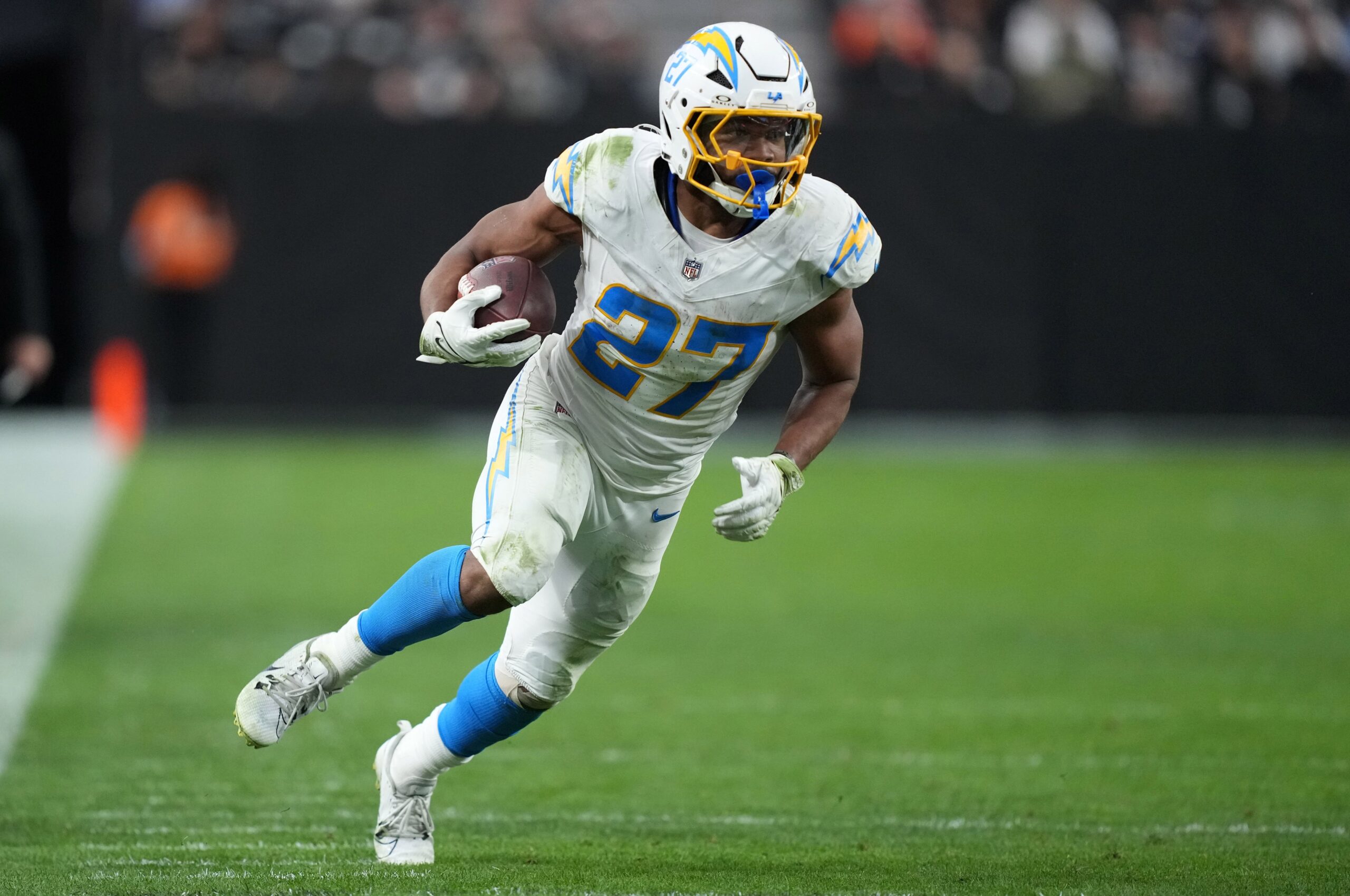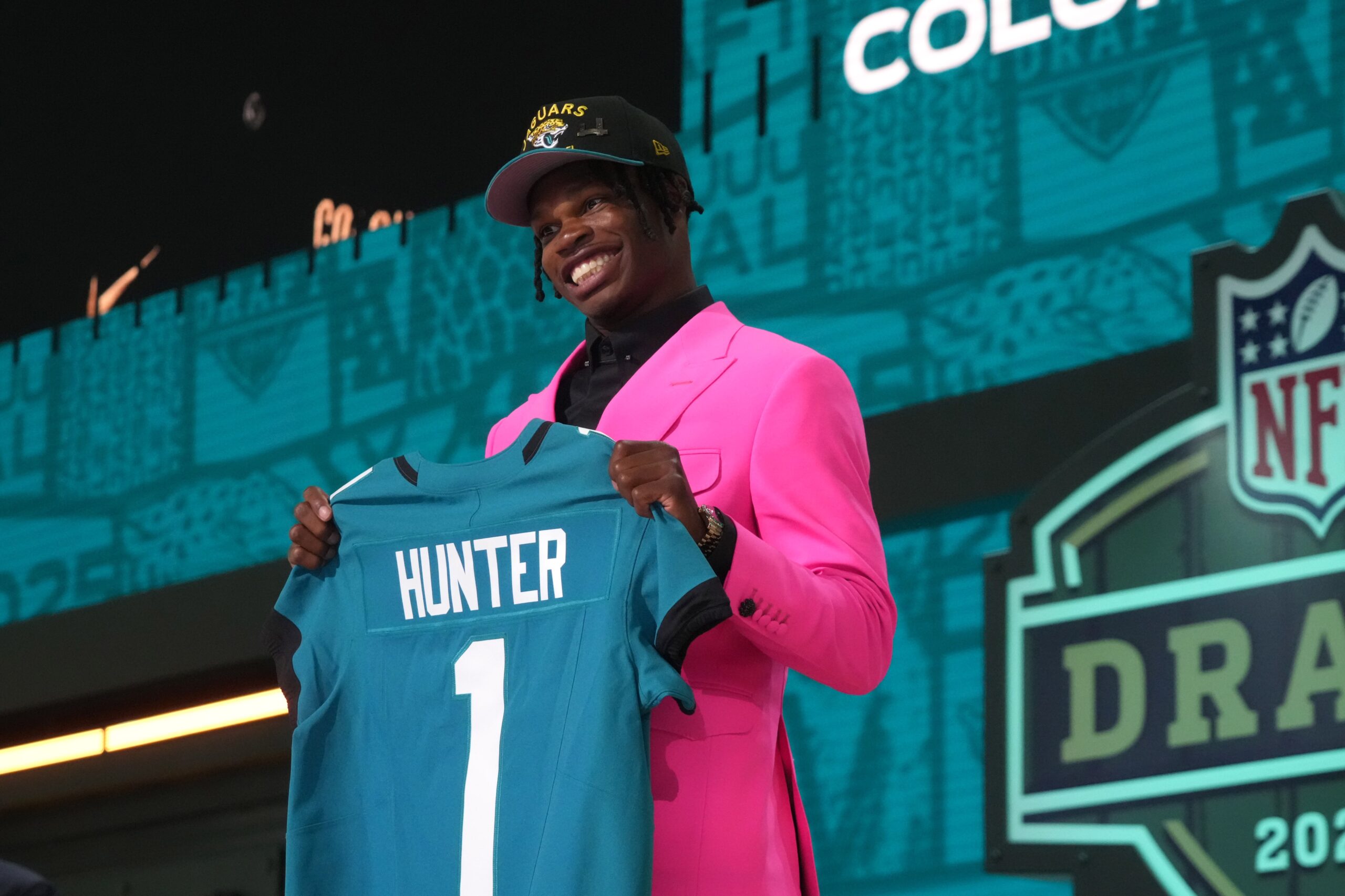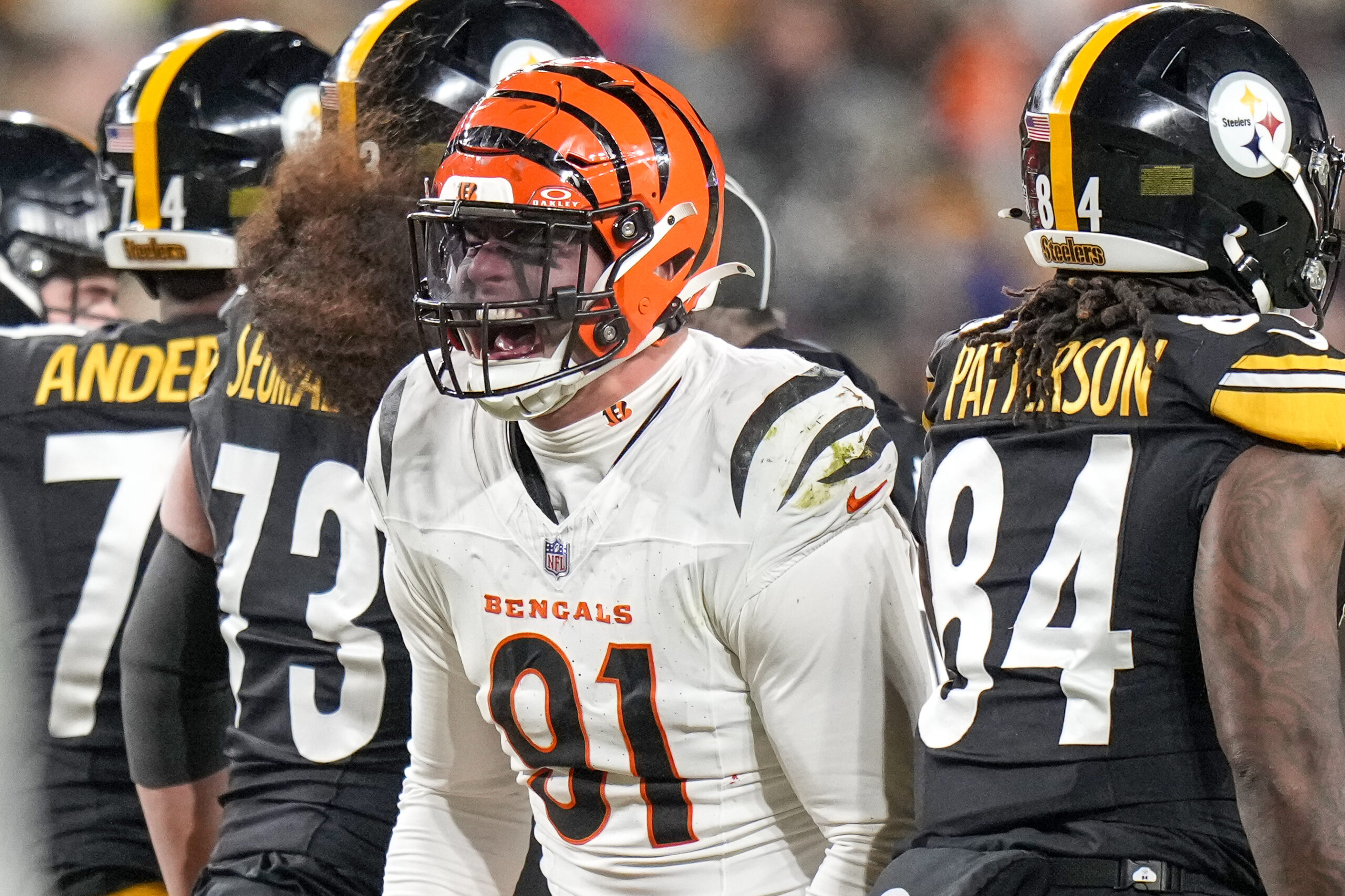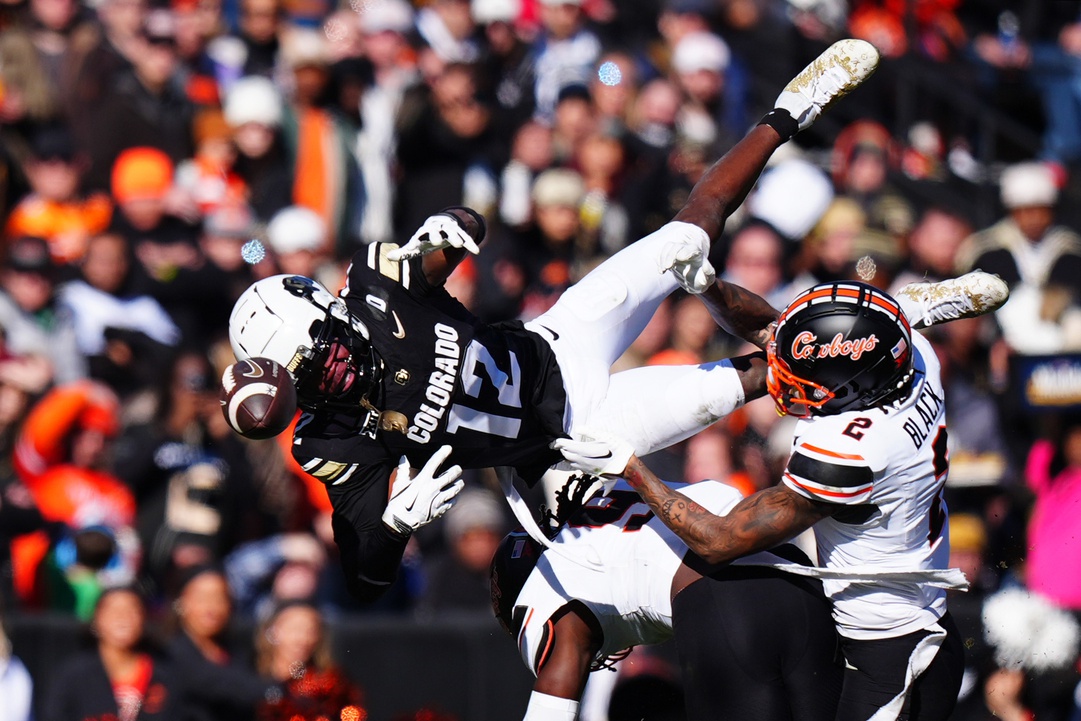NFL Analysis
4/5/24
9 min read
The New Wave Of NFL Linebackers Are Changing The Game
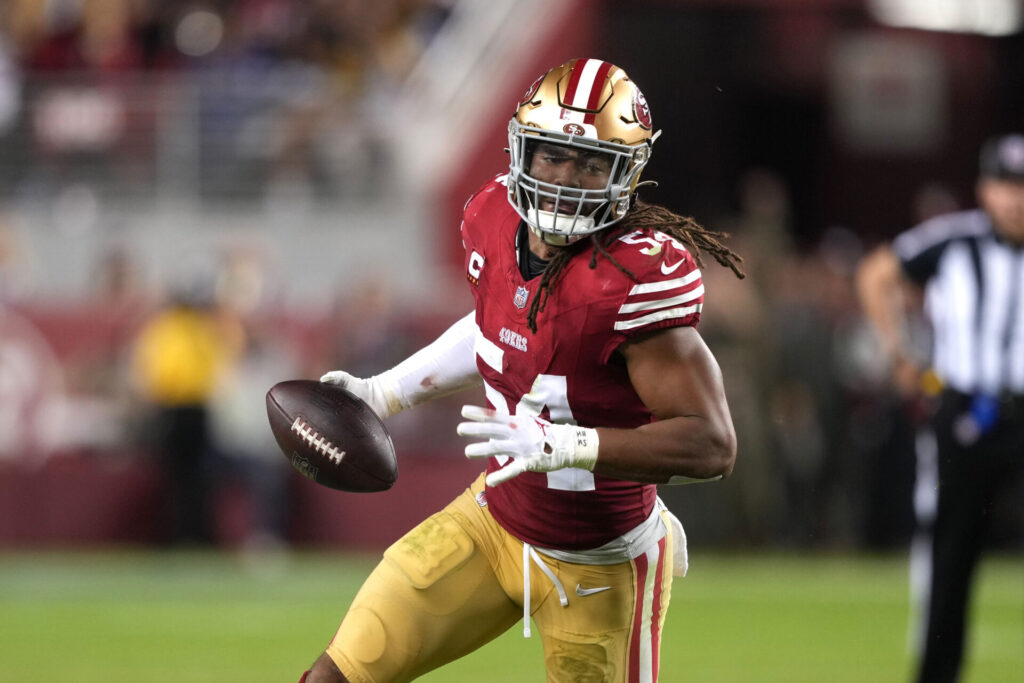
During the 2013 season, 19 linebackers totaled at least 50 solo tackles with a listed weight under 240 pounds. A decade later, that number was 40.
The position has gotten smaller, and that won’t change anytime soon. The 2024 NFL Draft class at linebacker is the second-lightest of the past decade, behind only 2023. The 2022 draft class was the third-lightest.
There is so much space to cover at the college level with the wider hash marks. With so many screens and RPOs in the college game, linebackers must chase down ball carriers and tackle in space. That takes a combination of physicality and speed that is tough to pull off at a heavier weight. At the same time, the receivers, tight ends and running backs have continually gotten stronger and faster.
Origin of Smaller Linebackers
This shift in the NFL is about a decade in the making. Washington State safety Deonne Bucannon was drafted in the first round by the Arizona Cardinals in 2014. But immediately, the 211-pound defender played most of his defensive snaps in the box.
With Tony Jefferson, Rashad Johnson and Tyrann Mathieu at safety and a suspension for linebacker Daryl Washington to start the season, the Cardinals got Bucannon on the field by moving him into the box in nickel packages. The move stuck, and the “moneybacker” position was created.
Bucannon’s production never quite exceeded his reputation or influence over the position. He eclipsed 100 tackles once and never made a Pro Bowl. But the modern linebacker looks and plays more like Buccannon than the 260-pound thumpers that used to roam the middle of the field.
“God gave me the ability to play in the box and also cover people,” Bucannon told the Cardinals team website (via SB Nation) in 2016. That ability is now a prerequisite for the best players at the position.
Coverage Trumps All Else
Protecting the middle of the field has become one of the most important aspects of a defense, as spread and condensed offenses have found ways to put linebackers in conflict. The Shanahan-style offenses use the wide-zone run game to get defenders moving horizontally before using play-action off those concepts to target the vacated areas.
Have a linebacker who can’t cover that ground or react on time to recover off play-action? Those plays will get spammed until they’re stopped.
Then, there are the offenses that stretch the linebackers by putting their best receiver on the inside of a trips formation and forcing a matchup against linebackers in space. Often, that’s a clear mismatch. Other times, Fred Warner becomes Superman.
Going back to the DAL-SF playoff game for a TBA project.
— Dan Pizzuta (@DanPizzuta) June 20, 2023
Had forgotten about this play. Fred Warner is just unreal. pic.twitter.com/NkSCkw7ukw
Warner starts in the A-gap and ends the play nearly 30 yards down the field, forcing an incompletion against CeeDee Lamb. On an episode of The Athletic Football Show this past offseason, then 49ers’ defensive coordinator DeMeco Ryans said Warner’s ability is the only reason that play could be run.
Now, there are enough of these linebackers that the efficiency of throwing to the middle of the field has started to drop. In 2023, EPA per play on pass attempts between the numbers dropped to a four-year low, per TruMedia. That includes the short and intermediate areas where these players are aligned.
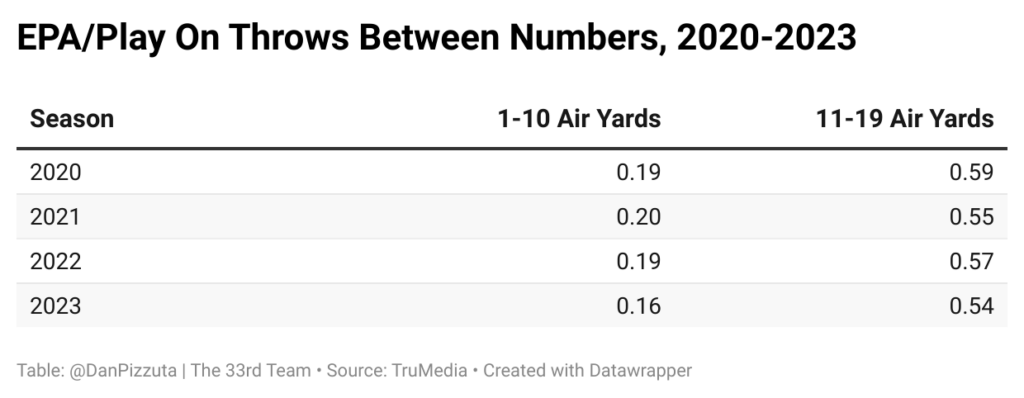
On short throws, the success rate has dropped from 57.6 percent in 2020 to 54.6 percent in 2023.
Run Defense Still Matters
Coverage is king for these players, but just because the linebackers are smaller and faster does not mean run defense was abandoned. The current defensive meta makes the run assignments more challenging for these players.
In 2020, 45.7 percent of defensive plays featured a light box with six or fewer defenders. This past season, that rate was 51.2 percent. There are also fewer linebackers on the field, with teams playing nickel 58.9 percent of the time in 2020 and 67.2 percent in 2023.
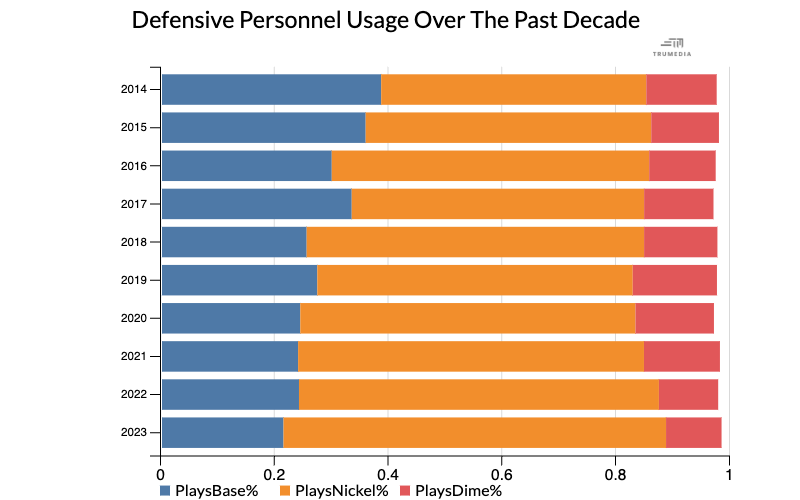
Some of these smaller linebackers are weapons against the run. Quincy Williams made first-team All-Pro in 2023 with a 70.5 percent positive tackle rate (tackles as a positive EPA play for the defense) at 225 pounds, featuring a spear of a tackle that wouldn’t look out of place on the WrestleMania card.
Azeez Al-Shaair was fourth among linebackers in positive tackles at 228 pounds. He made a tackle on more than a quarter of his run defense snaps and just signed a multi-year deal to man the middle of Houston’s defense under Ryans.
Terrel Bernard stepped in for the Bills when injuries hit, and the second-year linebacker played well at 224 pounds.
Still, even those players aren’t taking on offensive linemen and shedding blocks like past linebackers. These players can use their speed and aggressiveness to shoot gaps and find a free lane to make a tackle.
While the results have stayed somewhat similar, the way these linebackers get to the ball carrier has changed.
Finding Modern Linebackers Isn't Easy
Since Bucannon, the NFL has tried to find the ideal version of players to fit this role but has continually struggled to figure out where and how. High picks were used on players like Mark Barron, Keanu Neal, Jabrill Peppers and Isaiah Simmons to play similar roles. The results are mixed. Many of the position’s stars were found by accident.
Warner had 32.5 tackles for loss and seven interceptions in his college career. He was one of the most athletic players at the position in his draft class, but he still fell to the third round when the 49ers selected him with the 70th overall pick.
We can look at Warner as the best of the modern linebackers, and his college position helped pave the way.
At BYU, Warner played as an overhang defender, bouncing between the box and the slot. He spent a lot of time near the line of scrimmage during his first two college seasons. He played the slot and excelled in coverage at 230 pounds. Those skills instantly translated.
The year prior, the Buffalo Bills drafted Boston College LB Matt Milano in the fifth round after he measured in with eighth-percentile height and third-percentile weight. Milano is now a key piece in the middle of Buffalo's defense.
Roquan Smith, drafted eighth overall in 2017, is roughly the last highly regarded linebacker to step in and exceed — or even meet — expectations in this role. Still, it took Smith until he was traded to the Ravens in 2022 to truly transform the defense around him.
Since then, there have been some swings and misses in the first round, like Devin White, Devin Bush and the aforementioned Simmons, who were all selected with a top-10 pick. Then, players like Jamin Davis, Patrick Queen and Kenneth Murray were taken later in the first.
Arizona struggled the most trying to manufacture another Bucannon-type linebacker. Even before Simmons, they drafted Haason Reddick 13th overall and wanted to make him an off-ball linebacker. He struggled to make an impact there and finally moved back to the edge in his final season with Arizona. Since then, he’s totaled 50.5 sacks as one of the league’s most productive pass rushers.
Two years after Simmons, the Cardinals drafted Zaven Collins 16th overall. Last year, Collins played 89 percent of his snaps on the edge after playing linebacker in his first two seasons.
The NFL still hasn’t completely come to grips on how to value these undersized linebackers, both as prospects and monetarily.
Cincinnati's Ivan Pace went undrafted after measuring in at first-percentile height and 19th-percentile weight despite 21 tackles for loss and good coverage metrics in his final college season.
During Pace’s first season in Minnesota, he had a tackle on 19.4 percent of his run defense snaps. He was also 10th among linebackers in yards allowed per coverage snap in the middle of a chaotic Brian Flores defense.
Are Linebackers Due for Pay Increase?
Though more linebackers come into their own and contribute, the position's pay scale still lags behind. Before this offseason, pay at linebacker had only increased about 65 percent in the past decade while the cap has gone up 92 percent.
A group of linebackers got paid this offseason — Al-Shaair, Jordyn Brooks and Queen — as free agents, but that was partly influenced by the feelings of the upcoming draft class.
Linebacker is an important enough position to have at least some quality, so teams paid up to have something in place while there is a lack of enthusiasm for the incoming talent.
Per the current SIS Big Board, the highest-ranked linebacker is No. 36, and there are only four players at the position in the top 100. According to the latest Grinding The Mocks data, there are only two top-50 linebackers.
Offenses Are Reverting to Power Run Game
This season could be a tipping point in how these prospects come in and how the smaller players produce. NFL offenses are getting bigger, emphasizing interior linemen and the run game.
Guards got paid this offseason, and some of the best offenses have shifted from the wide-zone offense that puts linebackers in a bind horizontally to a power-run game that runs straight at them.
The NFL is running more on early downs after peaking at a 56 percent early down pass rate in 2020. The early down pass rate dropped to 54.8 percent in 2023.
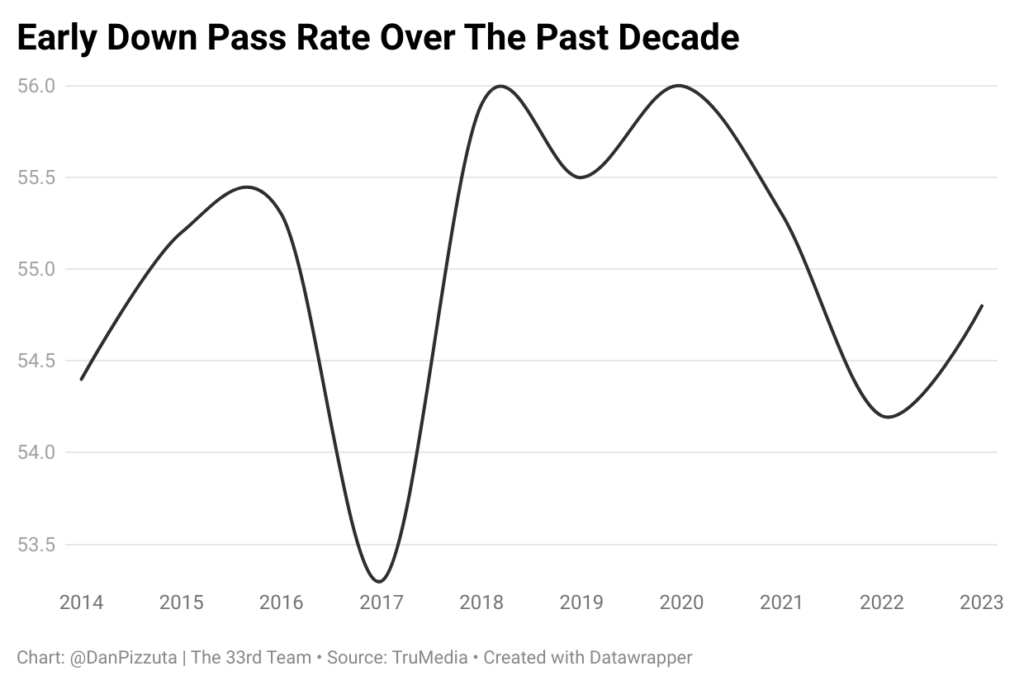
The linebacker position has already changed, arguably more than the others on defense, to keep up with the modern game.
Each innovation on offense seemingly puts these players in a tougher position, and the continued evolution has necessitated more adaptation.
The position isn’t going away — even as some defenses have experimented with three-safety looks, nickel packages will still be played on most snaps — but it’s not getting any easier. Not every team can have a Fred Warner, but offenses are trying to make it so every team needs one.


